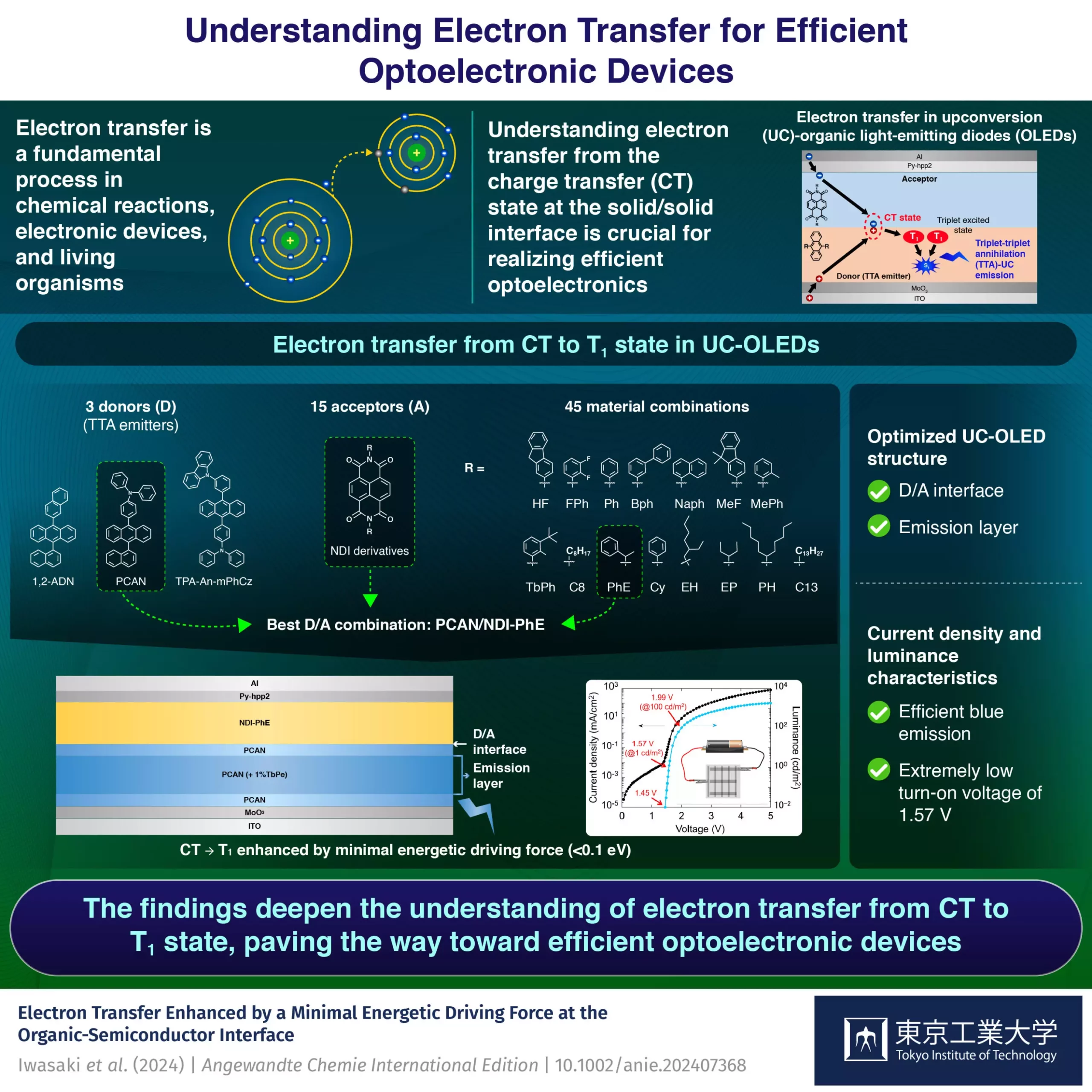Electron transfer is a critical process that plays a vital role in various fields, including chemical reactions, electronic devices, and living organisms. In the realm of organic optoelectronic devices, such as organic light emitting diodes (OLEDs) and organic photovoltaics, understanding and enhancing electron transfer efficiency is crucial for improving device performance and functionality.
One key intermediate step in the operation of organic optoelectronic devices is the charge transfer (CT) state, which involves a weakly bound electron-hole pair at the donor/acceptor interface. By studying electron transfer reactions from the CT state to other excited states, researchers can gain insights into the energetic and structural factors that influence electron transfer efficiency.
Despite the importance of understanding electron transfer in organic optoelectronic devices, conducting detailed analyses of these processes can be challenging due to various influencing factors. However, recent studies have explored new concepts, such as upconversion OLEDs (UC-OLEDs), which leverage electron transfer from the CT state to a triplet excited (T1) state through triplet-triplet annihilation (TTA) mechanisms.
A research team led by Associate Professor Seiichiro Izawa from the Laboratory for Materials and Structures at the Tokyo Institute of Technology recently conducted a study to investigate electron transfer efficiency from the CT state to the T1 state in 45 UC-OLEDs. By systematically analyzing different material combinations of anthracene derivatives as donors and naphthalenediimide derivatives as acceptors, guided by the Marcus theory, the researchers were able to uncover key insights.
The findings of the study revealed that electron transfer from the CT state to the T1 state is enhanced by a minimal driving energetic force of less than 0.1 eV. Additionally, the researchers identified a novel donor-acceptor combination, PCAN/NDI-PhE, which enabled the fabrication of an efficient blue UC-OLED with an incredibly low turn-on voltage of 1.57 V.
Dr. Izawa emphasized that the study’s results deepen our understanding of the mechanisms governing electron transfer efficiency in UC-OLEDs, leading to the development of more efficient devices. The research not only contributes to the advancement of UC-OLED technology but also enhances our understanding of similar organic optoelectronic devices.
The investigation into electron transfer efficiency in organic optoelectronic devices, particularly UC-OLEDs, has significant implications for improving device performance and functionality. By gaining insights into the energetic and structural factors that influence electron transfer processes, researchers can develop more efficient and reliable devices for various applications. The study conducted by Dr. Izawa and his team represents a crucial step towards unlocking the full potential of organic optoelectronic technology.


Leave a Reply